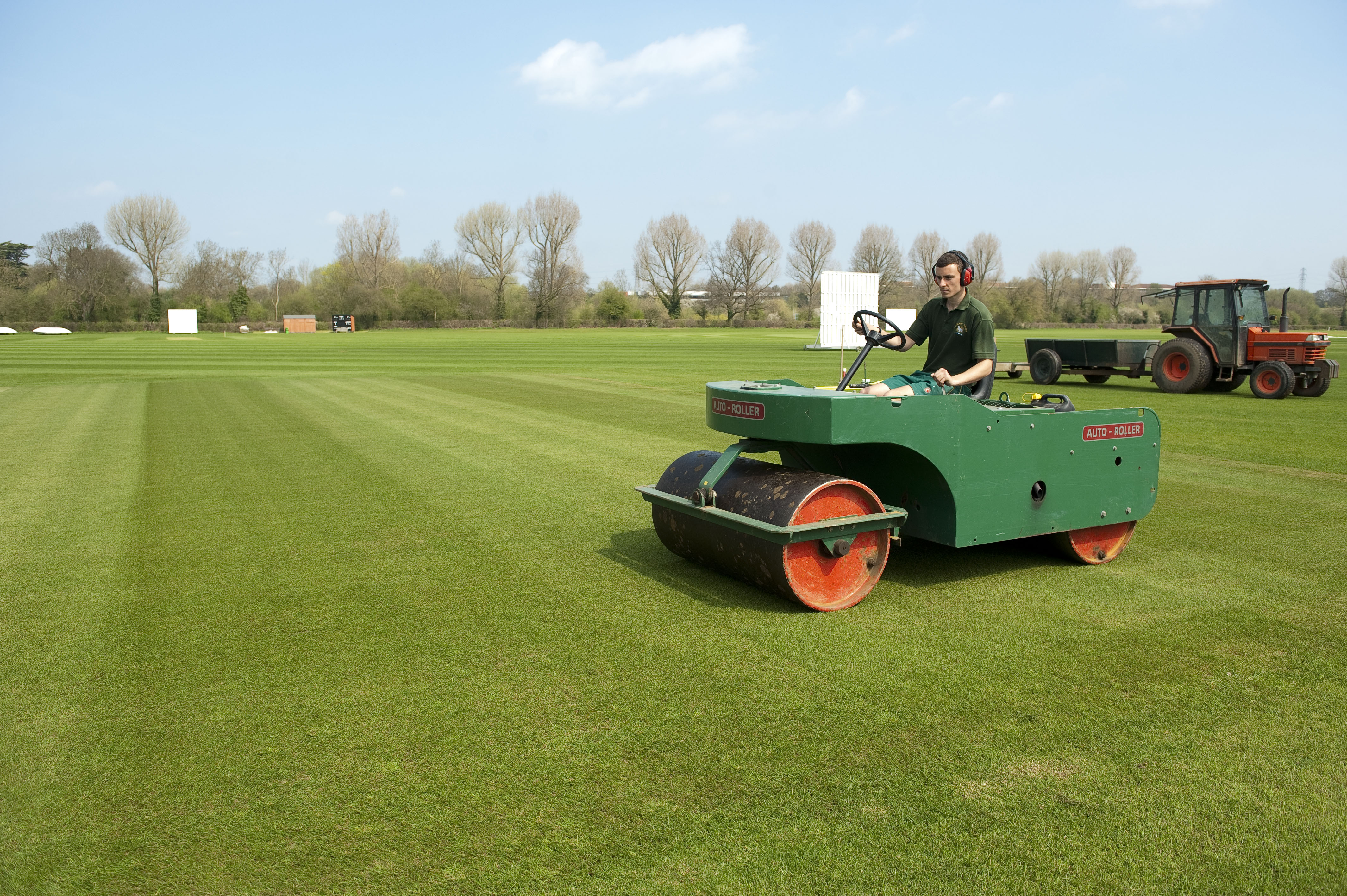Spring Rolling
Pre-season rolling on the cricket square is helpful to the production of quality pitches, as the cricket square requires a firm, even surface. Rolling should commence as soon as conditions permit, aiming to use successively heavier rollers as the soil dries to compact the soil over a period of several weeks.
The groundsperson is the only person who can decide when conditions are suitable for rolling. The roller should never mark or deform the soil in any noticeable way, or discolour the grass, so it is important that the soil is not too moist for the weight of the roller. If the roller is marking the soil then wait for it to dry sufficiently and try again.
Rolling when the soil is too wet will not be effective to depth and mean that there is too much forward movement in the soil and can damage the grass.
Use a light roller at the earliest opportunity in the spring, possibly at the end of February or the beginning of March, but gradually increase the weight, if possible, and finish off with the heavy roller.
It is essential that conditions are suitable to take the weight of the roller without marking the surface. If you can see marking then there will too much forward movement in the soil. During pre-season rolling, the pitch should be rolled in all directions so that it may offer the best chance of evenly compacting the surface and to smooth out any minor surface undulations.
A good description for this is to roll in a ‘union jack’ pattern. Once the season has begun, it is often difficult to roll in any other direction than with the line of play, so pre-season is the only chance to do this. The aim is to re-consolidate the square to a depth of around 75-100mm (3-4 inches) in time for the start of the season.
Click here to watch the video for pre-season rolling - https://youtu.be/Bdj_rgD-xKU
Practical Tips (Some areas to consider)
• Don’t rush Pre-Season Rolling
• Start with light cylinder mower and make several passes in different directions (union jack pattern, but the bulk of the rolling pre-season is best done in directions across the line of play) until the surface is firm enough and dry enough to take the next weight of mower or roller without marking.
• Move up to a heavy mower such as a 36” (if you have one) or a medium weight roller. Otherwise use the pedestrian roller and ballast it up with bags of loam. Do this until the square is firm and dry enough to take the next weight or roller without marking.
• When the surface is in a state to take the heavy roller then continue rolling in different directions. A good rule of thumb is that the surface is ready for that weight of roller only when it can be applied to the surface without leaving any marks or creases in the soil.
• One to three passes in a day is plenty, then allow time to dry (could be a day, could be several days, depending on the weather).
• Finally finish off with the heavy roller ballasted up to its maximum weight.
• How long and how many passes is needed with each mower/roller depends on the weather and how quickly the surface dries/firms up
• The first pass or two can be quite quick (to reduce the risk of the roller sinking in and causing too much forward movement), then begin to slow down for subsequent passes. The last few passes should be at normal rolling speed (very slow walking pace)
• PSR can vary drastically from year to year. Dry, warm springs will mean that less rolling is necessary, as the square will dry quicker.
• Avoid stressing the grass too much (i.e., give it some time off if it starts to look too unhappy)
• Avoid rolling until two or three days after granular fertiliser has been applied and it has been washed in otherwise you risk scorching the grass or staining the leaf (particularly if the fertiliser contains iron).
• Timing is everything. The research shows that rolling when the soil is in the right state will yield the maximum return on effort. In other words, a few hours in the right condition is far more effective than many hours spent rolling in the wrong conditions.
• The right moisture content is different for all squares and soils and depends on the type and weight of roller. Generally, the heavier the roller, the drier the soil should be before rolling (but there needs to be some moisture present and the soil should be in a plastic state.)
• The Cranfield rolling research tells us that it is through drying following rolling that bulk density of the soil increases the most significantly, not through the rolling itself…..so don’t spend hours rolling in the wrong conditions and allow some drying time in between or you will be wasting your time (and fuel). The worst thing you can do is to roll when it is too wet as this will simply smear the soil, could create too much forwards movement, produce root shear, or surface corrugation, and significantly reduce drying and pitch performance. https://foundation.lancashirecricket.co.uk/media/1653/guidelines-for-rol...
• The right time to start could be early to mid-February, or it could be the end of March. The grass plant should be in good health, but you don’t need to wait for strong grass growth. Do, however, be mindful that you shouldn’t damage the sward to achieve your aims.
• Ideally take cores or soil samples down the edge of pitches to assess how effective the rolling has been so far and if you need to do more or not.
We roll in order to compact the soil by reducing pore spaces and hence increase strength of soil so that:
Click here to watch the video for pre-season rolling - https://youtu.be/Bdj_rgD-xKU



 Tweet
Tweet